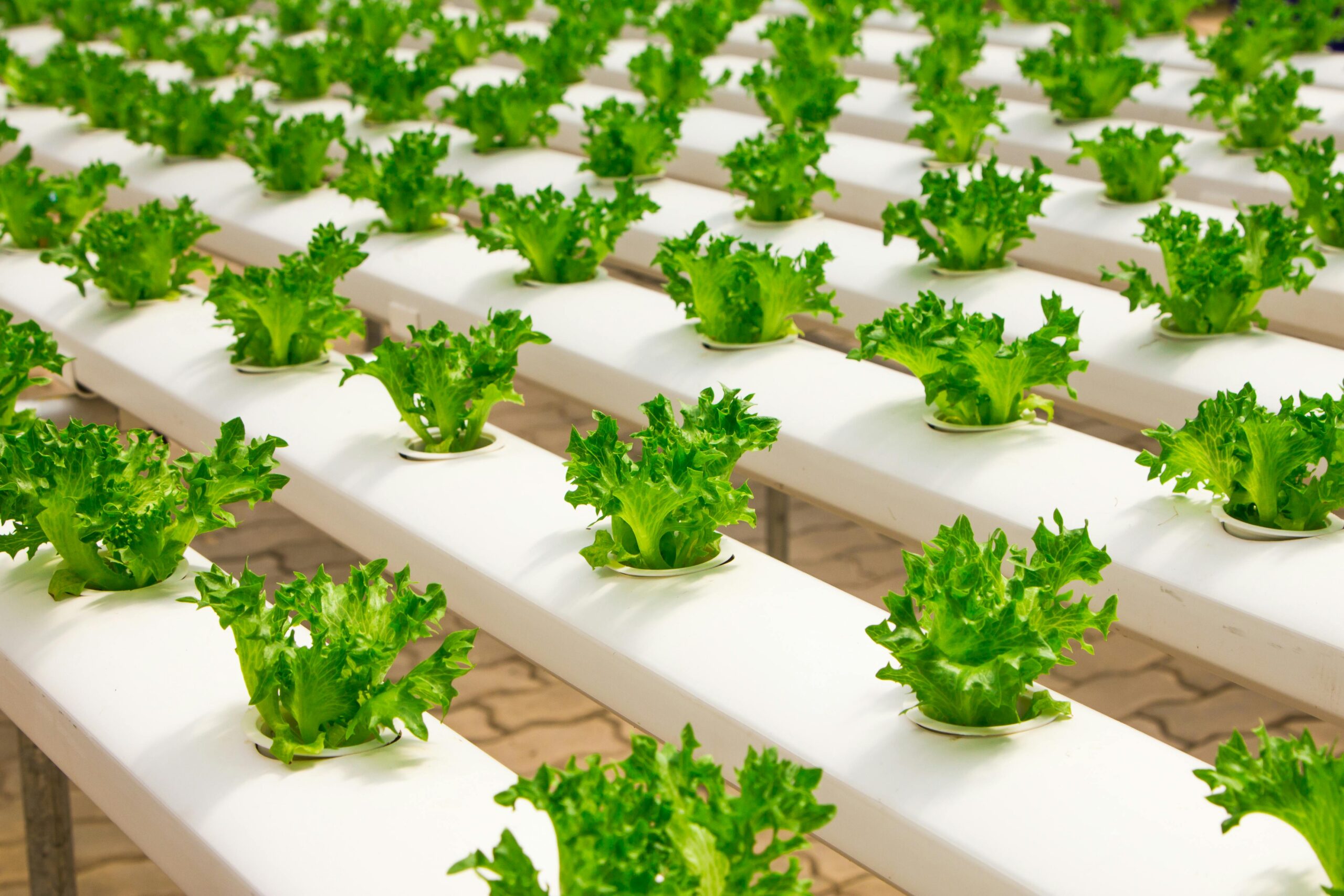Hydroponics, a modern farming technique, has been making waves in the agricultural industry. This innovative method allows plants to grow without soil, using nutrient-rich water solutions instead. With its numerous benefits, hydroponics has garnered attention from farmers, environmentalists, and food enthusiasts alike. In this article, we will delve into the world of hydroponics, exploring its advantages, applications, and potential to revolutionize our approach to food production. Whether you’re a curious gardener or an aspiring farmer, join us as we uncover the wonders of hydroponics and its impact on our future.
The Origins and Principles of Hydroponics
Hydroponics traces its roots back to ancient civilizations such as the Babylonians and Aztecs who practiced growing plants without soil. However, it wasn’t until the 19th century that modern hydroponics took shape with the pioneering work of scientists like Julius von Sachs and William Frederick Gericke.
The fundamental principle behind hydroponics lies in providing plants with the necessary nutrients, water, and oxygen directly to their root systems. By eliminating the need for soil, hydroponics optimizes resource utilization and minimizes water wastage.
There are several types of hydroponic systems, each with its own set of advantages and applications. From the popular nutrient film technique (NFT) to the deep water culture (DWC) system, hydroponics offers versatile options suitable for small-scale home gardens to large commercial setups.
The Advantages of Hydroponics
Hydroponics offers numerous benefits that make it an attractive choice for modern agriculture. Firstly, by controlling the nutrient intake of plants, hydroponics ensures optimal growth and higher yields compared to traditional soil-based farming.
Additionally, hydroponic systems allow for year-round cultivation, overcoming seasonal limitations and enabling farmers to grow crops regardless of the external climate. This controlled environment also reduces the risk of pests and diseases, minimizing the need for pesticides and herbicides.
Furthermore, hydroponics requires significantly less water compared to conventional farming methods. The closed-loop system allows for water recycling, reducing water consumption by up to 90%. This conservation of resources makes hydroponics a sustainable choice for food production.
Lastly, hydroponics can be practiced in urban areas, making it an ideal solution for vertical farming and rooftop gardens. By utilizing unused spaces in cities, hydroponics contributes to local food production, reduces transportation costs, and promotes a greener, more self-sufficient urban environment.
The Applications of Hydroponics
Hydroponics has proven to be a versatile method of cultivation, finding applications in various sectors beyond traditional farming.
1. Commercial Agriculture
Large-scale hydroponic farms are becoming increasingly common, especially in regions with limited arable land or unfavorable climates. These farms produce a wide range of crops, including leafy greens, tomatoes, strawberries, and herbs. By providing controlled conditions and efficient resource utilization, hydroponics enables farmers to maximize productivity and meet the growing demand for fresh produce.
2. Urban Gardening
Hydroponics has gained traction in urban gardening, where space constraints and limited access to fertile soil pose challenges for traditional gardening. From small-scale indoor setups to community gardens, hydroponics offers a solution for city dwellers to grow their own food sustainably. These urban gardens not only provide fresh produce but also serve as educational platforms for communities to learn about sustainable agriculture.
3. Research and Education
Hydroponics plays a vital role in research and education, especially in the fields of plant biology, agronomy, and environmental science. Its controlled environment allows scientists to conduct experiments, study plant responses to different nutrient compositions, and develop innovative cultivation techniques. Educational institutions also utilize hydroponics to teach students about plant growth, nutrition, and sustainable food production.
4. Space Exploration
Hydroponics has even found its way into space exploration programs. NASA has been experimenting with hydroponics as a means of cultivating crops in microgravity environments such as the International Space Station (ISS). By developing sophisticated hydroponic systems, astronauts can produce fresh food during extended space missions, reducing the reliance on resupply missions from Earth.
In conclusion, hydroponics offers a wide range of applications that go beyond traditional agriculture. Its versatility, resource efficiency, and ability to overcome space and climate limitations make it an invaluable technique for addressing food security, promoting sustainability, and advancing scientific research.
Challenges and Future Developments in Hydroponics
While hydroponics offers numerous advantages, it also comes with its own set of challenges and areas for future development.
1. Initial Setup Costs
One of the main barriers to adopting hydroponics on a larger scale is the initial setup costs. Hydroponic systems require specialized equipment, such as pumps, grow lights, and nutrient solutions, which can be expensive for small-scale farmers or gardening enthusiasts. However, as the technology advances and becomes more popular, the costs are expected to decrease, making hydroponics more accessible.
2. Technical Expertise
Operating a hydroponic system requires a certain level of technical expertise and knowledge about plant nutrition and system maintenance. This can be a challenge for beginners or those transitioning from traditional farming methods. However, with the availability of online resources, training programs, and support networks, individuals can acquire the necessary skills to successfully manage hydroponic systems.
3. Energy Consumption
Hydroponic systems rely on artificial lighting to provide plants with the necessary light spectrum for photosynthesis. This can lead to increased energy consumption, especially in larger setups. However, advancements in LED lighting technology and the use of renewable energy sources can help mitigate the energy consumption associated with hydroponics.
4. Nutrient Management
Maintaining the correct balance of nutrients in a hydroponic system is crucial for plant health and growth. Over or under-supplying nutrients can result in nutrient deficiencies, imbalanced growth, or even plant death. Continuous monitoring and adjustment of nutrient levels are necessary to ensure optimal plant nutrition. Ongoing research and innovation in nutrient management techniques can further enhance the efficiency and effectiveness of hydroponic systems.
5. Integration with Sustainable Practices
While hydroponics itself is a sustainable farming method, there is room for improvement in terms of integrating it with other sustainable practices. For example, exploring organic nutrient solutions, implementing water-saving techniques, and utilizing renewable energy sources can further enhance the environmental benefits of hydroponics.
In conclusion, while hydroponics offers numerous advantages, there are challenges to overcome and areas for future development. By addressing these challenges and continuously innovating, hydroponics has the potential to play a significant role in sustainable agriculture and food production in the years to come.
The Environmental Impact of Hydroponics
Hydroponics offers several environmental benefits that make it a sustainable alternative to conventional farming practices.
1. Water Conservation
Hydroponics uses water much more efficiently compared to traditional farming methods. The closed-loop system allows for water recycling, reducing water consumption by up to 90%. This not only conserves water resources but also helps mitigate the strain on freshwater ecosystems.
2. Reduced Chemical Usage
By eliminating the need for soil, hydroponics reduces the reliance on chemical fertilizers and pesticides. This reduction in chemical usage minimizes the risk of water and soil pollution, preserving the quality of ecosystems and safeguarding human health.
3. Land Optimization
Hydroponics enables vertical farming and the utilization of unused urban spaces, reducing the need for land-intensive agricultural practices. This land optimization helps protect natural habitats, preserves biodiversity, and prevents deforestation for agricultural expansion.
4. Energy Efficiency
While hydroponics does require energy for artificial lighting and system operations, advancements in energy-efficient technologies, such as LED lights, help minimize energy consumption. Additionally, the use of renewable energy sources can further enhance the energy efficiency of hydroponic systems.
5. Climate Resilience
Hydroponics allows for year-round cultivation, unaffected by external climate conditions. This resilience to climate variability and extreme weather events helps ensure a stable food supply, reducing the reliance on long-distance transportation and lowering associated carbon emissions.
Overall, hydroponics offers significant environmental benefits by conserving water, reducing chemical usage, optimizing land utilization, improving energy efficiency, and enhancing climate resilience. By embracing hydroponics, we can contribute to a more sustainable and resilient future for agriculture and the environment.
The Future of Hydroponics: Innovations and Potential
As hydroponics continues to gain popularity, there are exciting innovations and possibilities on the horizon that hold immense potential for the future of agriculture.
1. Smart Hydroponic Systems
Advancements in technology are paving the way for smart hydroponic systems that integrate automation, data analytics, and artificial intelligence. These systems can monitor plant health, nutrient levels, and environmental conditions in real-time, allowing for precise adjustments and optimal plant growth. With the ability to remotely control and monitor hydroponic setups, farmers can maximize efficiency and productivity.
2. Nutrient Recycling and Circular Systems
Efforts are being made to develop nutrient recycling systems that minimize waste and improve resource utilization. By capturing and reusing nutrient-rich water solutions, hydroponics can become even more sustainable and environmentally friendly. Circular systems that integrate aquaculture, where fish waste provides nutrients for hydroponic plants, showcase the potential for creating self-sustaining ecosystems.
3. Vertical Farming and Urban Integration
Vertical farming, a practice that involves stacking layers of hydroponic systems vertically, allows for higher crop yields in limited spaces. This technique is particularly advantageous for urban areas where land availability is scarce. Integrating hydroponics into urban infrastructure, such as rooftops, abandoned buildings, and shipping containers, can revolutionize urban farming and increase local food production.
4. Genetic Engineering and Crop Adaptation
Genetic engineering techniques can be employed to develop crops that are specifically adapted to hydroponic systems. By modifying plant genetics, researchers can enhance nutrient uptake efficiency, disease resistance, and overall growth potential. These advancements have the potential to increase crop yields, improve nutritional content, and maximize the benefits of hydroponic farming.
5. Collaboration and Knowledge Sharing
As hydroponics continues to evolve, collaboration and knowledge sharing among scientists, farmers, and enthusiasts are crucial. By sharing experiences, best practices, and innovations, the hydroponic community can collectively push the boundaries of what is possible and accelerate the adoption of this sustainable farming technique.
The future of hydroponics is filled with promise. By embracing technological advancements, exploring new cultivation techniques, and fostering collaboration, hydroponics has the potential to transform our approach to food production, improve food security, and contribute to a more sustainable world.
In conclusion, hydroponics presents a revolutionary approach to agriculture, offering numerous advantages and possibilities. From its ancient origins to modern innovations, hydroponics has proven to be a sustainable and efficient method of cultivating plants without soil. With its ability to conserve water, reduce chemical usage, optimize land utilization, and adapt to various environments, hydroponics holds great potential for addressing global food security challenges, especially in urban areas with limited space and resources.
As technology continues to advance, we can expect to see more developments in smart hydroponic systems, nutrient recycling, vertical farming, and genetic engineering. These innovations have the potential to further enhance the efficiency, productivity, and sustainability of hydroponics. By embracing collaboration and knowledge sharing, we can collectively contribute to the growth and adoption of hydroponics, paving the way for a more sustainable and resilient future of agriculture.
Whether you’re a farmer, a gardening enthusiast, or simply curious about innovative farming techniques, exploring hydroponics opens up a world of possibilities. By harnessing the power of hydroponics, we can revolutionize our approach to food production and contribute to a greener, more sustainable planet.

